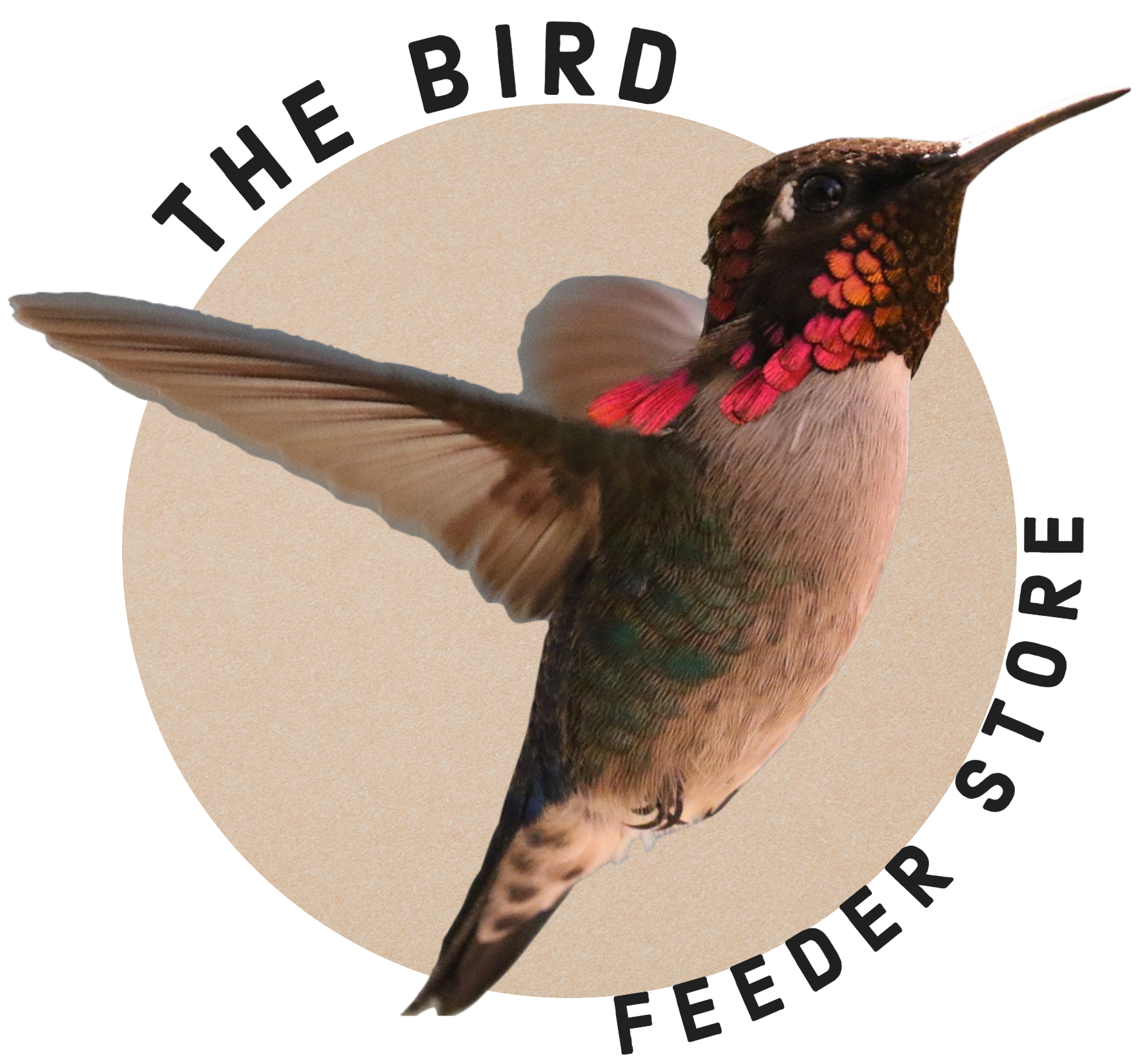Learn all about Bird Feeders
How to keep raccoons away from bird feeders.
How to Squirrel proof a bird feeder.
How to make a bird feeder.
How to attach a slinky to bird feeder.
How to keep squirrels off of bird feeders

Get to know Hummingbirds (Click Here for top 10 bullet points about hummingbirds)
A hummingbird’s brilliant throat color is not caused by feather pigmentation, but rather by iridescence in the arrangement of the feathers. Light level, moisture, angle of viewing, wear and tear, and other factors all influence just how bright and colorful the throat may appear.
With 15 hummingbird species found in the U.S. we see only a fraction of the total number of species. Some are common, like the Ruby-throated Hummingbird, the only species commonly found in the East, and Anna’s Hummingbird, which is found year-round along the West Coast. Others, like the Lucifer Hummingbird, have small U.S. ranges.
A good example are the Anna’s Hummingbirds. They are small but speedy with noted speeds up to 61 mph. Tiny but aggressive. Little bodies at 3.9” in length, a heartrate of up to 1200 beats per minute. Most weigh less than two pennies at 3 to 4 grams. Hummingbirds have no sense of smell but have very keen eyesight. They have the fastest wings and heartbeats, the most efficient metabolisms, and the most minuscule eggs. Watching these tiny marvels at a feeder, it’s hard not to wonder how hummingbirds zip around so quickly or keep their feathers so brilliant. Hummingbirds are tough survivalists. Many of the actions that help them persevere also make them fun to watch.
Hummingbirds have outstanding spatial memory and can remember feeder locations years later. They are also able to keep track of bloom peaks and remember which flowers they’ve visited. This is because a large portion of a hummingbird’s brain is occupied by the hippocampus, an area dedicated to learning and spatial memory.
You typically see hummingbirds at nectar blooms and sugar-water feeders, but they also eat tree sap and small insects when flowers are hard to find in the wild. Nectar is the high-octane nourishment that fuels hummingbirds, but they also need body-building protein. They spend considerable time hunting and eating the small insects, spiders and other arthropods that provide the vital compound. Thanks to the fliers’ amazing agility and the special adaptation that essentially makes their bills spring-loaded sets of chopsticks, hummingbirds snatch insects out of the air. Hovering, they also glean earthbound prey from spiderwebs, vegetation and other places.
A hummingbird must consume approximately one-half of its weight in sugar daily, and the average hummingbird feeds five to eight times per hour. In addition to nectar, these birds also eat many small insects and spiders, and may also sip tree sap or juice from broken fruits.
Hummingbirds do not suck nectar through their long bills, instead, they lick it with fringed, forked tongues. Capillary action along the fringe of their tongue helps draw nectar up into their throats so they can swallow.
A hummingbird can lick 10 to 15 times per second while feeding. Hummingbird’s digest natural sucrose—the sugar found in floral nectar—very quickly with 97 percent efficiency for converting the sugar into energy. So in the end this is why we recommend a 4 to 1 ratio of Water to Sugar. Boil the water, add the sugar and let cool. Very simple to make
Another fascinating hummingbird fact—they have superb visual acuity. They see color even better than we do, with their vision extending into the ultraviolet spectrum. Their eyes are tuned to the rosy hue because their retinas have a denser concentration of cones, which mute color shades like blue and heighten warmer shades like red and yellow. Their eyes are adapted to see warm shades better than cooler shades. This ability to easily pick out orange, yellow and red flowers amid a sea of cool green led to the long-held assumption that they prefer red over other colors. Scientists have since learned that the richness of the nectar matters more than the color of its source. The birds are quick learners, and it is nourishment they are after. With the right flowers and feeders, you can attract them to your yard, too.
A hummingbird’s maximum forward flight speed is 30 miles per hour. These birds can reach up to 60 miles per hour in a dive, and hummingbirds have many adaptations for unique flight. A hummingbird’s wings beat between 50 and 200 flaps per second depending on the direction of flight, the purpose of their flight, and the surrounding air conditions. The ruby-throated hummingbird flies 500 miles nonstop across the Gulf of Mexico during both its spring and fall migrations. You might have heard that these tiny birds “ride” on the back of other birds during migration. This is a myth—they fly this distance entirely on their own. The peak fall migration period for hummingbirds is from mid-July through August or early September, depending on the route and the exact species. Species that nest further north begin migration earlier.
If you think the same hummingbirds come back to your feeders and flowers every year, you might be right! Banding research shows they are likely to return to the area where they hatched.
Credits to Birds & Blooms, thespruce.com and birdwatchingsolution.
